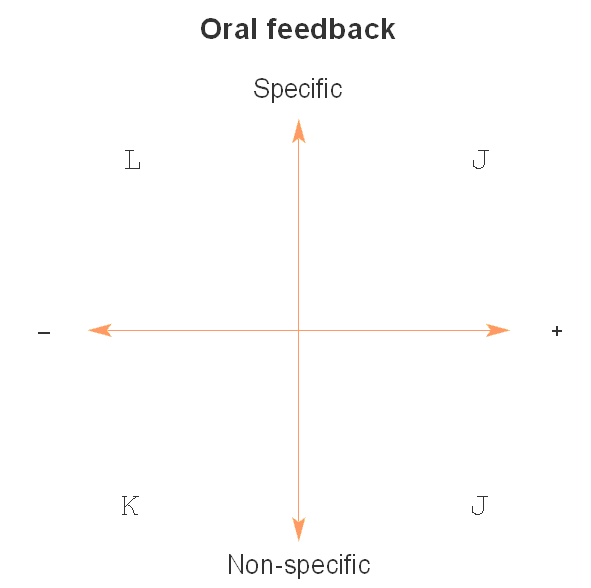Giving Oral Feedback/Document
Providing feedback
Learners need information and guidance in order to plan the next steps in their learning. Oral and written feedback are closely interrelated and provide opportunities for teachers to identify learners’ strengths and to give clear and constructive advice on which areas need improvement. A supportive classroom ethos is essential so that pupils feel safe to take risks, for example by giving speculative responses to challenging questions. Once teaching routinely provides good oral feedback, then it is possible to provide more informative and selective written feedback.
Oral feedback
Oral feedback is a powerful force for moving pupils on and will be the most regular and interactive form of feedback. It is both direct (targeted to individuals or groups), but also indirect (others listen and reflect on what has been said).
The main purposes of using different types of feedback are to:
- acknowledge what pupils have learned and encourage them to reflect on and extend their learning still further;
- recognise that pupils need time to reflect on their learning;
- encourage pupils to pose further questions to clarify or further develop their own or each other’s thinking;
- encourage pupils to make next steps.
Teachers’ comments should always be both positive – recognising pupils’ efforts and achievements to date, and developmental – offering specific details of ways forward.
| Considering some examples |
Consider the following examples of oral feedback. Place the numbers for each statement on the diagram above.
Use a tape recorder or video camera to capture two or three episodes involving oral feedback in your classroom. Use the diagram to analyse your responses. Is your feedback mainly positive and specific? Identify any aspects of your feedback that you would like to improve and record your next steps. Plan an opportunity to repeat the exercise in a few weeks to see if you have achieved your targets. |
Oral feedback for different purposes Teachers use different types of oral prompt for different purposes in lessons. The following chart shows ways of providing oral feedback that encourages pupils to develop and move on in their thinking and learning.
| Feedback for different purposes | Examples of oral prompts | Examples of oral prompts observed in lessons |
| Correcting an error | Good try, but that’s not correct. Actually it’s … | If he’s saying due to … is he describing … explaining? |
| Providing information | Yes, what you’re talking about is called … | So these are all descriptions … this is telling you why, it’s an explanation. |
| Appraising and praising | That would make sense, good thinking … Has anyone else tried something similar? | Let’s just pull that … that’s really important … thank you. |
| Challenging | Try that again. This time include/vary … | Do you agree with what he underlined? |
| Seeking clarification | What do you mean when you say it needs more detail? | So is using numbers not better than comparing two places? |
| Urging amplification, exploration or development | How might you take that argument even further? Which would be the best way to …? | What’s different about this sentence from the one above? |
| Redirecting learning or activity | That’s a detailed illustration. Move on to the explanation, as it is also important. | Now you’ve named places think about how you could compare them. |
| Focusing or orienting learning | All this is important but it’s really your use of … that will really improve your work. | So she (Lucy) really focused you in on one thing you could use
… actually using numbers. |
| Confirmation and moving learning on | Yes, that’s right, now you can … | We’re making quite a lot of headway here … does anyone have an even better sentence? |
| Crystallising steps | So spend a few minutes deciding on two changes you will make to your … | So her target would be to add numbers to her comparisons. |
| Distilling and summarising learning | Let’s think about what we’ve learned so far. Firstly, we’ve found out … | So we’ve agreed that comparing is good. Using numbers to compare is even better. |
| Encouraging pupils to reflect | Let’s just think about what we’ve discussed – is there anything else you might do? | I want you to read it carefully and say what you think is your best sentence. |

